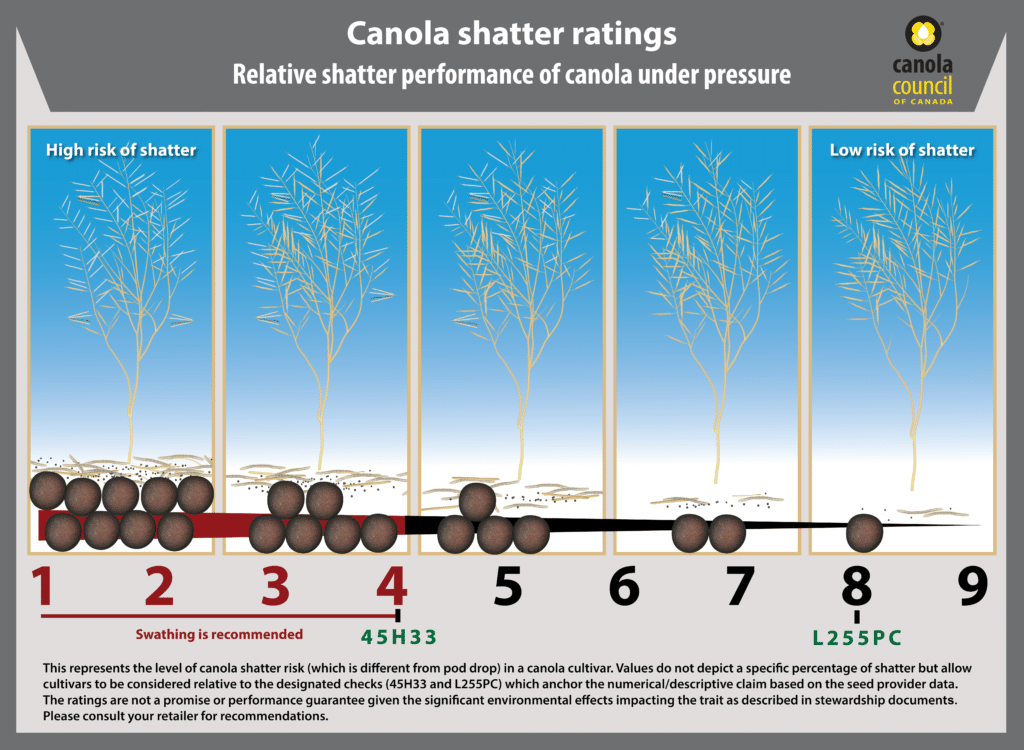CCC’s five agronomy priorities – with slogans that need your help
The CCC agronomy team consulted the industry and have developed five agronomic priorities to help reach the goals of 52 bu./ac. average yield and 26 million tonnes of total Canadian canola production by 2025. The Canola Watch editor then went rogue and created some “catchy slogans” (his words) to help with promotion. Please, please send us your creative improvements or share them with @CanolaWatch on Twitter.
Here are the agronomy priorities in bold and slogans in quotations:
- Use 4R Nutrient Management when making fertilizer decisions. “4R or 4 aren’t – Which R you?”
- Choose the best seed traits for each field. “No more seeds of discontent.”
- Achieve a uniform 5 to 8 plants per square foot. “Be dense!”
- Identify and manage the top yield robbers in each field. “‘I don’t scout, I just spray,’ says Karen, the 1980s farmer.”
- Harvest all seeds and deliver them at No.1 grade. “Every seed is sacred.”
Find more agronomy details on the five priorities. You might also like this Canola Digest article “Grower survey identified big agronomy challenges“.
Preparations for 2022
Growers and their agronomists are juggling seed and fertilizer supply challenges to put together final crop rotations for 2022. Have conversations this month with seed and fertilizer suppliers to check on supply. If spring soil sampling is part of the plan, book that as well. Here are a few links to dig into more information on these topics:
- How much fertilizer does canola really need?
- What should you do about phosphorus rates?
- After the drought: Top 10 preparations for 2022
- Get the most out of every seed
- A better flea beetle management plan
- 10 new research findings to improve 2022 canola production
What other agronomy questions are on your mind as you prepare for 2022? Please let us know.
Shatter ratings for canola cultivars
Canola grower organizations in cooperation with WCC/RRC have developed a new shatter rating system for canola cultivars. The risk assessment tool uses a 1-9 scale, with “1” being a very high risk of shatter and “9” a very low risk of shatter. The scale includes two common checks to provide reference points. Swathing is recommended for cultivars in the 1-4 range. Cultivars with a rating of 5-9 are suitable for straight combining. The tool can help to set expectations, especially when trying a new cultivar. The voluntary system (seed companies do not have to use it) should be ready for seed decisions later this fall. Nicolea Dow explains the system in this video from the Canola Watch Webinar Series. Canola Digest describes pod shatter differences. The graphic image below is from the Canola Encyclopedia.
Novel products – Cut through the hype
You may see novel products on the market with promises to increase nutrient efficiency, increase yields for lower costs, etc. The following two links will help you cut through the hype: Evaluate the data used to promote any new product. Set up field trials to run your own evaluations.

